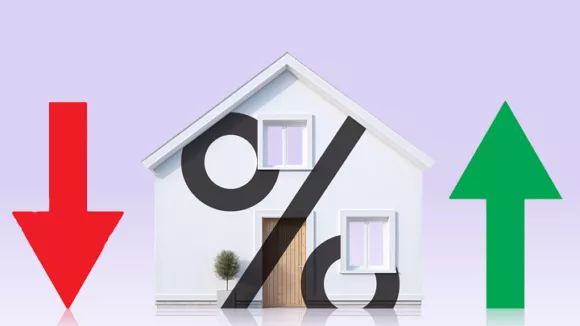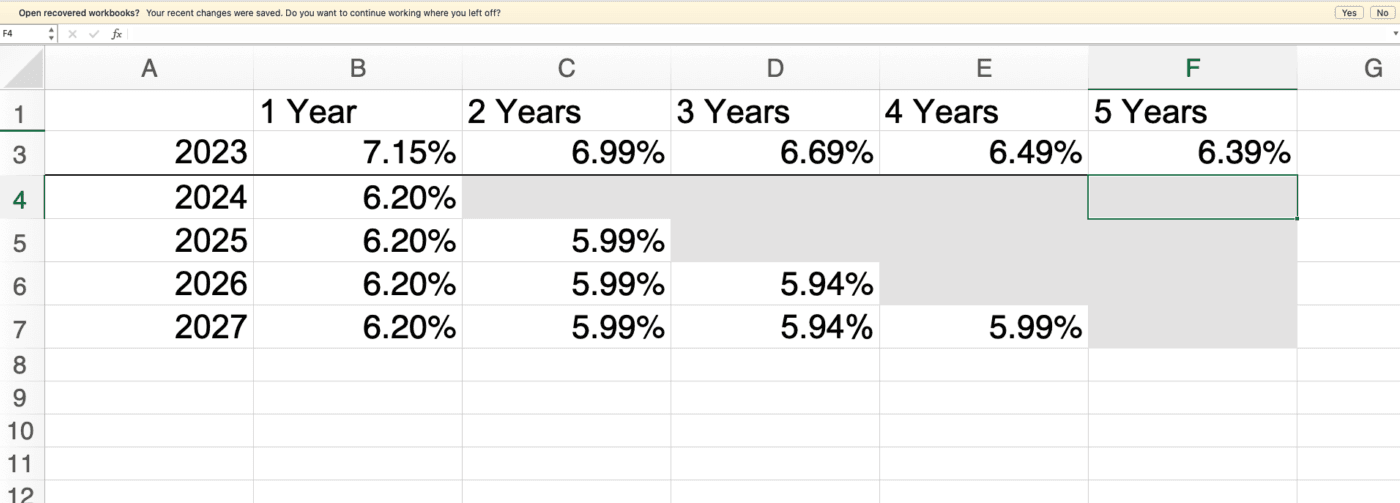
Mortgages
Interest rate predictions– Where are interest rates heading?
Discover where interest rates are headed in 2026 and beyond so you can make informed decisions for your property portfolio.
Mortgages
6 min read

Interest rates are high. So, a lot of investors ask: “How long should I fix my mortgage interest rate for?”
The thing is, no-one knows where rates will go month-to-month, year-to-year.
Sure, experts provide forecasts, but we can’t predict the future.
Things happen, and interest rates change. Two years ago it was Covid (no-one saw that coming), then inflation … something will be next.
So, in an uncertain environment what’s better – the 1, 2, 3 or even the 5-year fixed interest rate?
In this article, you’ll learn 3 strategies you can use to find the right interest rate for you.
First, what are you trying to do when choosing a mortgage interest rate.
Usually, it’s not about getting the lowest rate today. It’s about getting the lowest average rate for the next 5 years, because that’s the longest you can lock your interest rate in for.
Right now, the 5-year rate is cheaper than the 1-year rate.
But if interest rates go down, today’s 5-year rate could look expensive in a few years.
Here are the strategies you can use.
One option is to choose the 1-year interest rate every year. No matter what.
Over the last 20 years that would have given you the lowest rate on average.
Let’s say you fixed for 1 year every year for the last 20 years.
Sure, sometimes you’ll pay a higher interest rate.
Locking in for 5 years back in 2004 would have given you a lower rate between 2006 and 2008.
That’s because the 1-year rate jumped from 6.9 to 9.7% in just 4 years.
But then the 1-year rate went down quickly. So, over time the 1-year rate has been cheaper than the 5-year rate. So, this strategy works for investors who say, “I don’t know where interest rates will go. Locking in for 1-year has been a good strategy in the past. I’m going to do that today.”
You won’t always come out ahead, but over time you likely will.
Let’s say you had a $500k mortgage (on P+I) back in 2004. If you locked in the 1-year rate every single time, you would have saved:
Big savings.
If you don’t want to put all your eggs (or mortgage) in the same fixed-rate basket – you can split it up.
Let’s say you’ve got a $500k mortgage.
Some investors will put $250k on 1-year fixed. They’ll fix another $250k on a different term (e.g. 2-year or 5-year).
If you do this, you’ll get an average of the market over time.
That does mean you’ll never get the absolute lowest interest rate, but if you choose the “wrong” interest rate, then you’re only half wrong.
So this strategy works for investors who say, “I don’t know where interest rates will go. Let me hedge my bets.”
An investor I recently worked with fixed half their mortgage for the 5-year fixed when it was 2.99%. They fixed the rest for 1-year. They’re now paying over 7% on one part of their mortgage, but are still paying under 3% for the other part.
They’re happy. Their interest rate is about 5% (on average). They’re stoked. It’s a win for them.
Right now, the 5-year rate is the cheapest on the market. The lowest advertised 5-year rate is 6.39% from Westpac.
The lowest 1-year advertised rate is 7.15% from Kiwibank.
So when would it make sense to take the 1-year over the 5-year?
And how far would interest rates need to fall for it to be worth taking the higher rate?
Here are the numbers:

You’d need to get an average rate under 6.20% over the following 4 years for the 1-year rate to be worth it.
So ask yourself: “Once my first year is up, could I get an average interest rate of less than 6.20% (on average) for the next 4 years?”
If you think the answer is “yes”, go for the 1-year.
If you think the answer is “no”, take the 5-year.
The purpose isn’t to guess the interest rate precisely. It’s about giving you a frame of reference so you can decide which rate to choose.
The right strategy for you will hinge on these 3 things:
As a rule of thumb:
It’s not necessarily about choosing the lowest rate today. It’s about what’s going to give us the lowest average interest rate over the next couple of years.
Today, if we chose the lowest interest rate you’d go for the 5-year interest rate.
But you might not want to be fixing for 5 years because rates are high. What if interest rates go down soon?
In 2021, interest rates were low. So, locking in the 5-year interest rate was the smartest thing to do.
At the time, that rate was 2.99%. No, it wasn’t the best interest rate, but it was fantastic looking back.
You've also got to ask yourself if you’re OK with uncertainty. We call this the “sleep test”.
There are people out there who think: “I’m not concerned with the lowest rate, I want certainty. So, I'm going to lock in for longer”.
That’s a fine decision.
If a shorter, more uncertain interest rate keeps you up at night, maybe you need more certainty.
Some people sleep better knowing exactly what their repayments are each month.
Sure, the 5-year rate is usually more expensive in the long run, but you might be willing to pay that price for a stable interest rate. That way your repayments don’t change every year.
You can’t always afford the rate you want.
I believe in locking in for the 1-year rate. It works for me, but right now the 1-year rate is almost 0.8% higher than the 5-year rate.
On a $500,000 mortgages, that’s $4,000 a year. An extra $80 a week.
If your budget is tight you might need to go for the lowest rate today, even if it’s more expensive in the long run.
Sure, it’s a great idea in theory to say: “I’ll fix the 1-year forever."
But that strategy only works if you can afford it.
Sure, the 5-year rate is almost always cheaper today. But in 3 years you might kick yourself.
Just like many of us are kicking ourselves for taking the cheaper 1-year rate in 2021.
We saved a bit of money in the first year, but we are paying for it now.
A higher rate today might save you money in the long run.
Interest rates will always change.
So, it’s about at what point you lock it in, and what happens to interest rates over that period.
Mortgage broker for over 10 years, property investor and Managing Director at Opes Mortgages
Peter Norris, a certified mortgage adviser with 10+ years of experience, serves as the Managing Director at Opes Mortgages. Having facilitated over $1.2 billion in lending for 2000+ clients, Peter is a respected authority in property financing. He's a frequent writer for Informed Investor Magazine and Property Investor Magazine, while also being recognized as BNZ Mortgage Adviser of the Year in 2018 and listed among NZ Adviser's top advisers in 2022, showcasing his expertise.
This article is for your general information. It’s not financial advice. See here for details about our Financial Advice Provider Disclosure. So Opes isn’t telling you what to do with your own money.
We’ve made every effort to make sure the information is accurate. But we occasionally get the odd fact wrong. Make sure you do your own research or talk to a financial adviser before making any investment decisions.
You might like to use us or another financial adviser